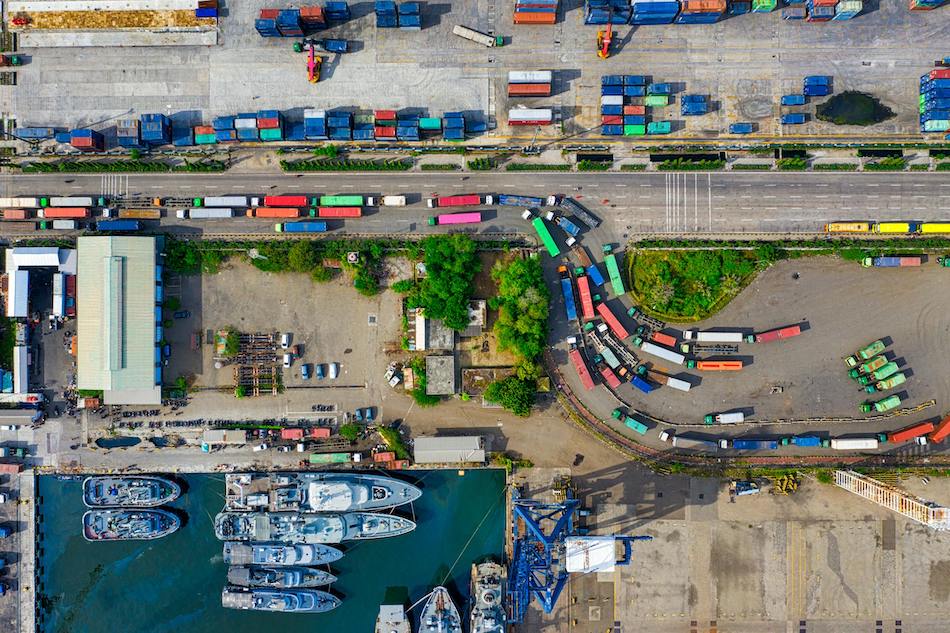The backbone of every thriving ecommerce business is its logistics network. And the silent hero within that framework? Fleet management.
Getting products from warehouses to doorsteps, on time and without incident, is complex. It’s a complicated dance that only becomes more challenging as a company grows.
Timely delivery is a must for ecommerce businesses, especially in this day and age where people want everything almost instantly. As per the respondents from a 2024 survey, the majority of people expect delivery of their parcel within two days. Of course, 90 percent of consumers will wait two or three days for deliveries, especially if it means they can avoid shipping costs.
At the end of the day, the responsibility falls on the fleets of vehicles delivering these products from one place to another. If these fleets are managed efficiently, everything falls into place for the ecommerce companies. This is where AI can help as a practical tool, reshaping how fleets are managed and optimised in real-time. Here’s how.
Where AI Meets Fleet Management
Fleet management systems (FMS) have long relied on GPS tracking and basic telematics to gather information. But AI takes that a step further. Instead of merely collecting data, it interprets it.
With AI, an FMS can:
- Predict vehicle maintenance needs before a breakdown occurs
- Anticipate delivery delays based on real-time traffic patterns
- Learn from historical data to recommend more efficient delivery routes
This intelligent system integration is especially crucial for large e-commerce operations.
Tracking the Moments That Matter
A USPS truck was recently seen running a red light in St. Louis. Thankfully, it didn’t hit any other vehicle or individual; otherwise, a car accident lawyer from St. Louis would’ve been involved. After that, it would’ve become a legal matter, and a car accident lawsuit might have followed.
As TorHoerman Law points out, car accident lawyers will sniff out necessary evidence to support the case. They can then help the car accident victims get the justice and compensation they deserve. For e-commerce companies, getting involved in such legal drama, that too because of their delivery fleet, is the last thing they’d want.
AI can monitor and assess driver behaviour far beyond speed or idle time. It now includes more nuanced actions, like how many red lights a driver ignores, or how often stop signs are ignored.
Using advanced computer vision integrated with dashcams and real-time data analysis, AI can flag these violations as they happen. This kind of monitoring isn’t about creating a surveillance culture; it’s about safety and compliance.
Fleet managers are now able to receive alerts, detailed video clips, and pattern analyses on these specific violations. This level of oversight wasn’t possible before, but it’s quickly becoming the new standard for responsible fleet operation.
Predictive Maintenance
Gone are the days when maintenance meant waiting for something to break. AI has introduced predictive maintenance into fleet management, allowing companies to address vehicle issues before they become costly problems. Sensors throughout the vehicle send data on everything from engine temperature to brake wear, and AI models analyse this information continuously.
These models can forecast with surprising accuracy when a part is likely to fail or when a vehicle might need servicing. It’s not guesswork; it’s data-backed prediction. This helps avoid unexpected breakdowns that delay deliveries and increase customer dissatisfaction.
For e-commerce businesses, time is money, and every minute a delivery van is stuck on the side of the road, the costs add up. AI gives fleet managers the ability to plan maintenance proactively, minimizing downtime and reducing repair expenses.
Optimizing Routes in Real Time
Traditional route planning uses maps and traffic reports, but AI brings in dynamic, real-time adaptability. It considers not just the shortest path, but also changing traffic conditions, road closures, weather, and even delivery urgency.
AI-driven route optimization adjusts in the moment, rerouting drivers to avoid unexpected delays and helping ensure on-time arrivals.
This is especially valuable during peak e-commerce seasons when a surge in orders puts more pressure on delivery schedules. AI allows the system to scale effortlessly, assigning routes to available drivers based on proximity, workload, and even historical performance.
Drivers spend less time stuck in traffic, fuel costs go down, and customers receive packages faster – a win all around.
Using AI Data to Support Drivers
There’s a common misconception that AI will replace the human element in logistics, but the reality is quite the opposite. AI supports drivers rather than supplanting them. When systems flag poor driving habits or repeated safety concerns, the goal isn’t punishment. It’s education.
Fleet managers can use these insights to implement targeted training sessions, showing drivers how to correct specific behaviors. Some companies have even started gamifying their fleets, rewarding drivers with the best safety scores or the most improved performance. This way, AI becomes a coach, not a critic, reinforcing the idea that safer driving is better for everyone, including the drivers themselves.
Frequently Asked Questions (FAQs)
How do AI-based driver-monitoring systems work?
AI-based driver-monitoring systems use cameras and sensors installed inside the vehicle to observe the driver’s face, eyes, and body posture. These systems apply machine learning algorithms to detect signs of drowsiness, distraction, inattention, or unsafe behaviors. Some systems can also monitor vital signs or head position. When a risk is detected, the system can alert the driver with audio, visual, or haptic feedback.
Are self-driving trucks safe for logistics purposes?
Self-driving trucks have shown promising safety benefits in controlled environments and along specific freight corridors. They’re equipped with sensors like LiDAR, radar, and cameras, combined with AI that processes road data in real-time. While they reduce fatigue-related accidents and improve efficiency, they’re not foolproof. Safety improves when autonomous trucks operate on mapped routes with minimal human interference and regulatory oversight.
Do fleet management systems have limits on the number of vehicles they can monitor simultaneously?
Fleet management systems are scalable, but they do have limits based on the provider’s infrastructure, software capacity, and subscription tier. Basic systems may handle tens to hundreds of vehicles, while enterprise-grade platforms can monitor thousands across regions. However, as the number of vehicles increases, system performance and real-time analytics can be affected if the platform isn’t properly optimized.
Incorporating AI into an e-commerce fleet management system is no longer an experiment. It’s a practical, proven strategy to improve efficiency, safety, and scalability.
For companies looking to reduce operational costs, scale intelligently, and grow, integrating AI into fleet operations isn’t just the next step. It’s the ultimate step. And perhaps most importantly, it reminds us that the future of e-commerce logistics isn’t about replacing people. It’s about giving them better tools to succeed on the road and beyond.





